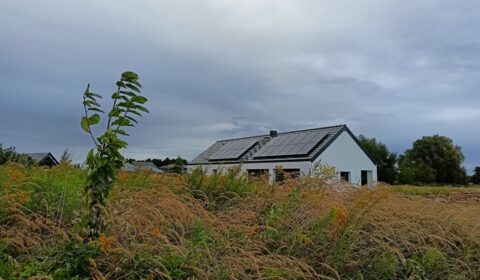Platts
Feature: Dutch offshore wind plans to offset Groningen gas cuts, coal exit by 2030
London (Platts)–10 Apr 2018 832 am EDT/1232 GMT
Plans for offshore wind farms and new power cables are expected to help facilitate Dutch government plans to close coal plants and end gas production at the Groningen field by 2030, an analysis by S&P Global Platts shows.
- Government wants offshore wind to provide 40% power by 2030
- Coal exit, Groningen gas field closure also set for 2030
- Negative price risk offset by carbon floor, new cables
„We have essentially all coal units retiring by 2030 and not much gas running [in the power sector], with Dutch demand largely met by wind and imports,” Platts Analytics Managing Director of Global Power Bruno Brunetti said.
„Due to the carbon floor, gas plants that will be running beyond 2030 will be at a high power price,” Brunetti added.
At present, coal and gas supply over 75% of Dutch electricity, with wind and net power imports around 10% each, according to transmission system operator TenneT.
Last month, the new coalition government announced two major policy decisions that will fundamentally change the power mix in the 2020s.
First, Economy Minister Eric Wiebes launched a roadmap for offshore wind, expected to provide 40% of current power demand by 2030.
Secondly, the minister announced a gradual phase-out of domestic gas production at Europe’s biggest onshore gas field, in Groningen province, to zero by 2030.
Article continues below…
|
What do electric vehicles and future transport mean for the global energy system? S&P Global Platts Analytics shares its expectations, discussed in full in our latest special report: platts.com/transport-report
|
|
In 2014, Groningen yielded 35 Bcm of gas, with the Netherlands traditionally an exporter of natural gas since the 1970s.
This figure will halve to 17.5 Bcm for gas year 2019 due to production quotas enforced to limit seismic activity that has been blamed on gas production.
Quotas will fall sharply in the early 2020s, forcing the Netherlands to import gas either by pipeline or LNG.

By 2030, the coalition also plans to close all coal power plants and reduce carbon emissions by 49% compared to 1990 levels, with the Netherlands behind a 2020 target for a 25% cut.
„With power demand assumed largely flat and renewables generation growing we assume the Netherlands will be able to both close coal by 2030 but also reduce its gas-fired generation from current levels,” Platts Analytics analyst Anise Ganbold said.
„With the seasonality in demand and volatile renewables, we assume there will still be a need for gas-fired power generation beyond 2030 to balance the market,” the analyst added.

OFFSHORE WIND ROADMAP
The Netherlands has been lagging behind in renewables growth but has now started to catch up, adding over 1 GW in 2017 to bring wind and solar capacity above 7 GW.
By 2025, wind and solar’s share in the Dutch power mix could be a third, according to a base scenario by TSOs, after the government boosted subsidies.
Beyond that, focus will be on offshore wind, with some of the most ambitious plans in Europe and 7 GW in new tenders announced for the 2024-2030 period.
Shell VP New Energies Mark Gainsborough has said that offshore wind could form the energy backbone for Northwest Europe amid sharp cost declines.
At the annual offshore wind conference last year, Gainsborough called for bigger offshore wind leases to achieve further cost savings.
The roadmap makes that possible and even brings TSO TenneT’s vision of an artificial island in the North Sea a step closer, with the 4 GW IJmuiden Far Offshore zone.

TenneT is working with the government to research the possibility of constructing an island in the IJmuiden zone to accommodate a converter and transformer station. This may be more cost-effective than installing multiple offshore platforms, it said.
An island would offer opportunities for converting wind into hydrogen and facilitate a „wind connector” to Great Britain, it added.
Dutch offshore wind costs have dropped from Eur73/MWh ($90/MWh) in 2015 to Eur55/MWh in the 2016 tender won by a consortium including Shell, to zero in the most recent tender, which was won by Vattenfall.
The Dutch state still pays for the grid connection.
Investment of Eur15-20 billion and 10,000 jobs would bring a strong boost to the economy, with the government suggesting new potential for the Groningen region from the North of the Wadden Islands offshore zone.
The new projects will increase Dutch offshore wind capacity to 11.5 GW by 2030, but may also increase the risk of negative prices, with average demand just above 11 GW in 2017.
Projects beyond 2030 depend on hydrogen developments to enable storage of surplus wind.
CARBON FLOOR AND CROSS-BORDER CABLES
Plans for a UK-style carbon floor price from 2019 will give developers some guarantee against negative power prices as seen in Germany.
However, Germany’s nuclear phase-out and rising carbon price expectations will lead to higher power prices in the 2020s.
In the near term, Dutch power will get a supply boost from new power cables from Denmark and Germany, which could lift imports by 50%.
TenneT also plans to double capacity on the Belgian border by 2022.
In the long term, the cables will help to offset surges in wind and provide security of supply during times of low wind amid potential overcapacity following a gas plant boom at the start of the decade, with some assets still mothballed despite substantial coal plant closures.
The Netherlands could even turn into a net electricity exporter during the next decade, with major uncertainties remaining.




























































